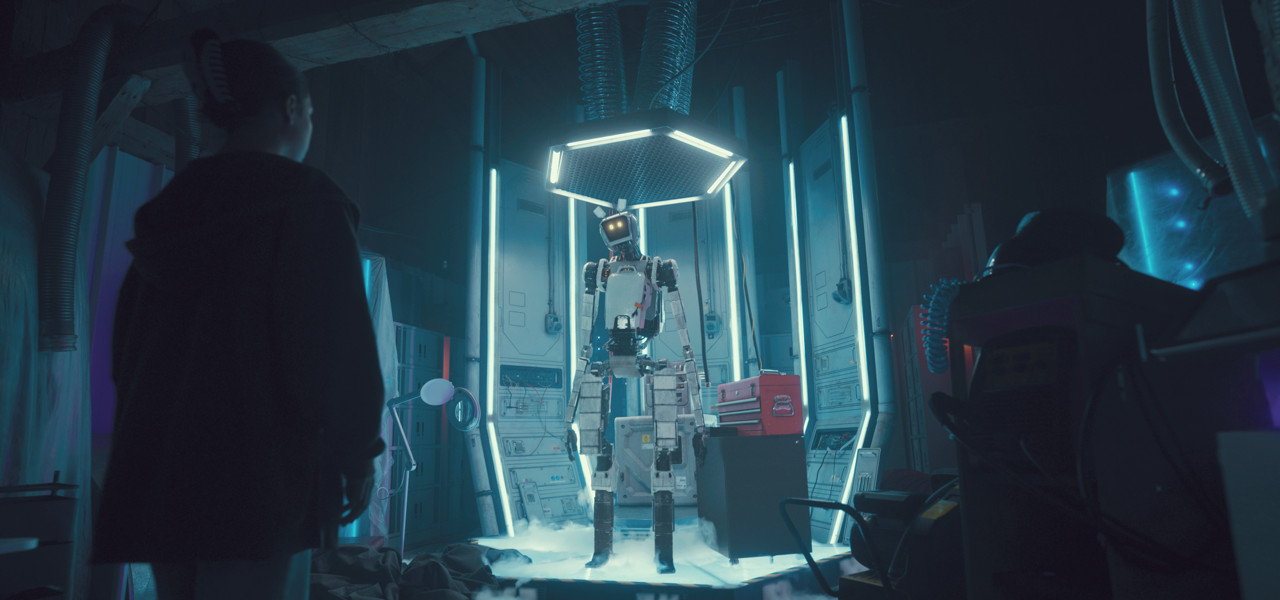

How Autodesk’s New Asset Management Platform Flow Evolves Cloud-Based Production Pipelines
Jeff Bell knows his way around the cloud. As former founder of Tangent Labs – with a background as a character animator, animation rigger, cg supervisor, and animation producer of titles including director Alberto Rodríguez’s 2016 dog tale Ozzy and Netflix’s 2018 sci-fi Next Gen – Jeff has first-hand knowledge of wrangling assets, navigating logistics, and charting animation pipelines.
Since joining Autodesk, which in 2021 acquired Tangent’s cloud-based production pipeline technology LoUPE, Jeff has been at the forefront of creating the company’s streamlined cloud-based asset management platform, Flow. Taking time out from his role as Autodesk’s senior engineering director, Jeff joined Cartoon Brew to discuss what we can expect from Flow’s new paradigm.
Cartoon Brew: What will Flow be bringing to ‘the cloud’ of animation asset management systems?

Jeff Bell: A lot of other systems are meant more for production tracking, not so much asset management, although they have been deployed in those ways. Flow is an enterprise-level production platform that will give us the ability to do asset management in visual effects and animation production in a manner that hasn’t been done before. Flow goes far beyond production tracking, it does asset tracking and asset management ‘versioning,’ it is cloud-based, and it will support multiple storage mechanisms – the client’s storage does not need to reside with Autodesk. We know that clients are concerned about ownership of their data. Their data is their data, and that’s something that we are committed to. As much as possible, we subscribe to the MovieLabs [whitepaper] ‘The 2030 Vision’ – giving clients the ability to choose where their data lives. Some of that may be through storage that we provide if a client wants an all-in-one solution, but they are also welcome to bring their own storage.
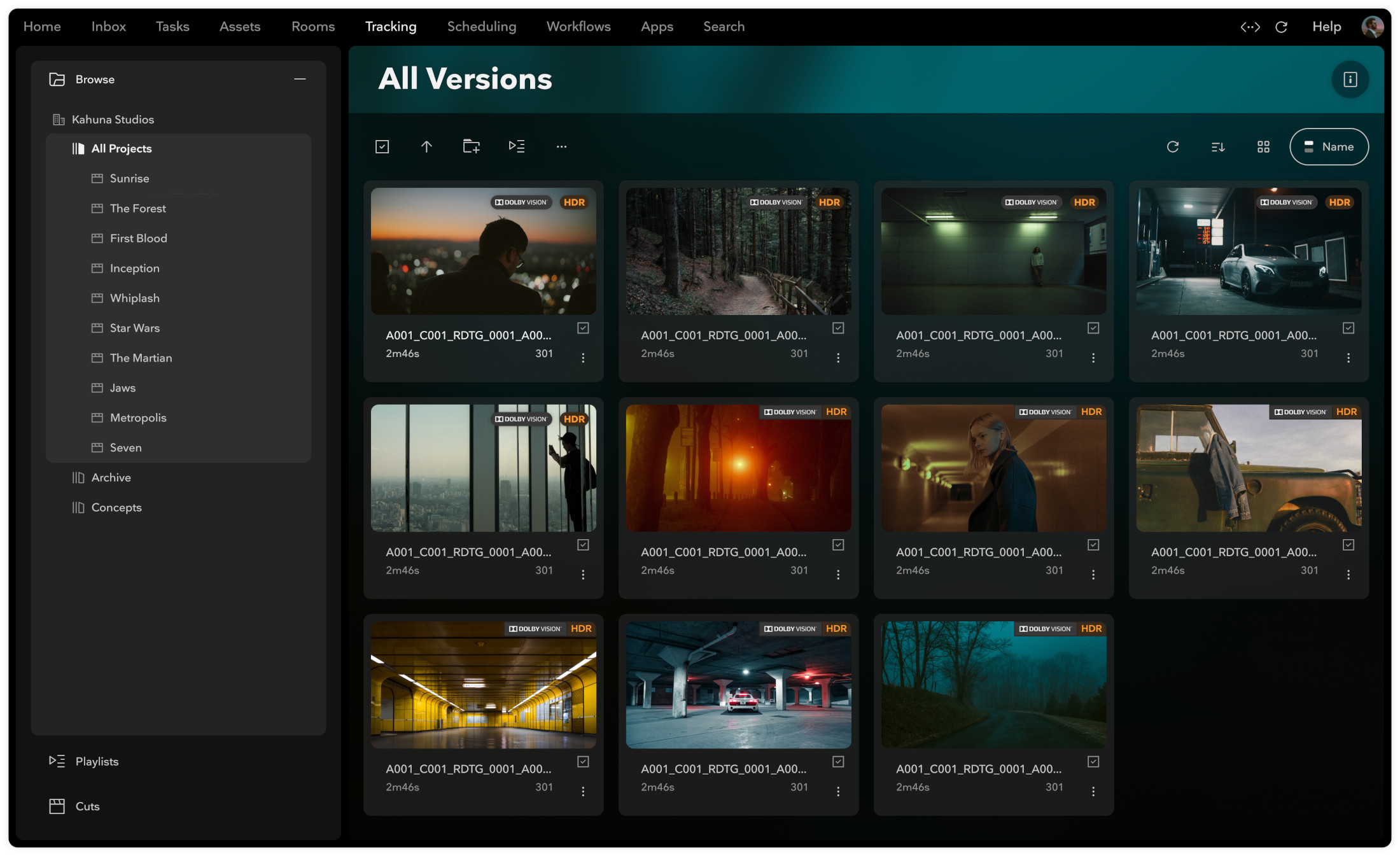
Where is Flow cloud storage located?
It’s Amazon S3 [Simple Storage Service]. And there is a front end called OSS [Object Storage Service] that we would provide for storage in the cloud. But we also support systems like NFS [Synopsys’ Network File System protocol]. And we’re working with third-party providers like Hammerspace to look at other storage solutions. Hammerspace, for instance, has a very interesting globally unified file system that does ‘just-in-time’ inflation of data that sits in data stores. That means they’re constantly synchronizing metadata, but they only inflate the binary data when requested. Or, you can ‘pre-populate’ the data. For instance, if you are working with a collaborator outside of your main facility and you know that they are going to be working on a certain sequence next week, you can ‘pre-inflate’ that data before that period. We want to set up partnerships with the major storage providers and third-party providers like Hammerspace to give our clients as much choice with regard to their storage as possible.
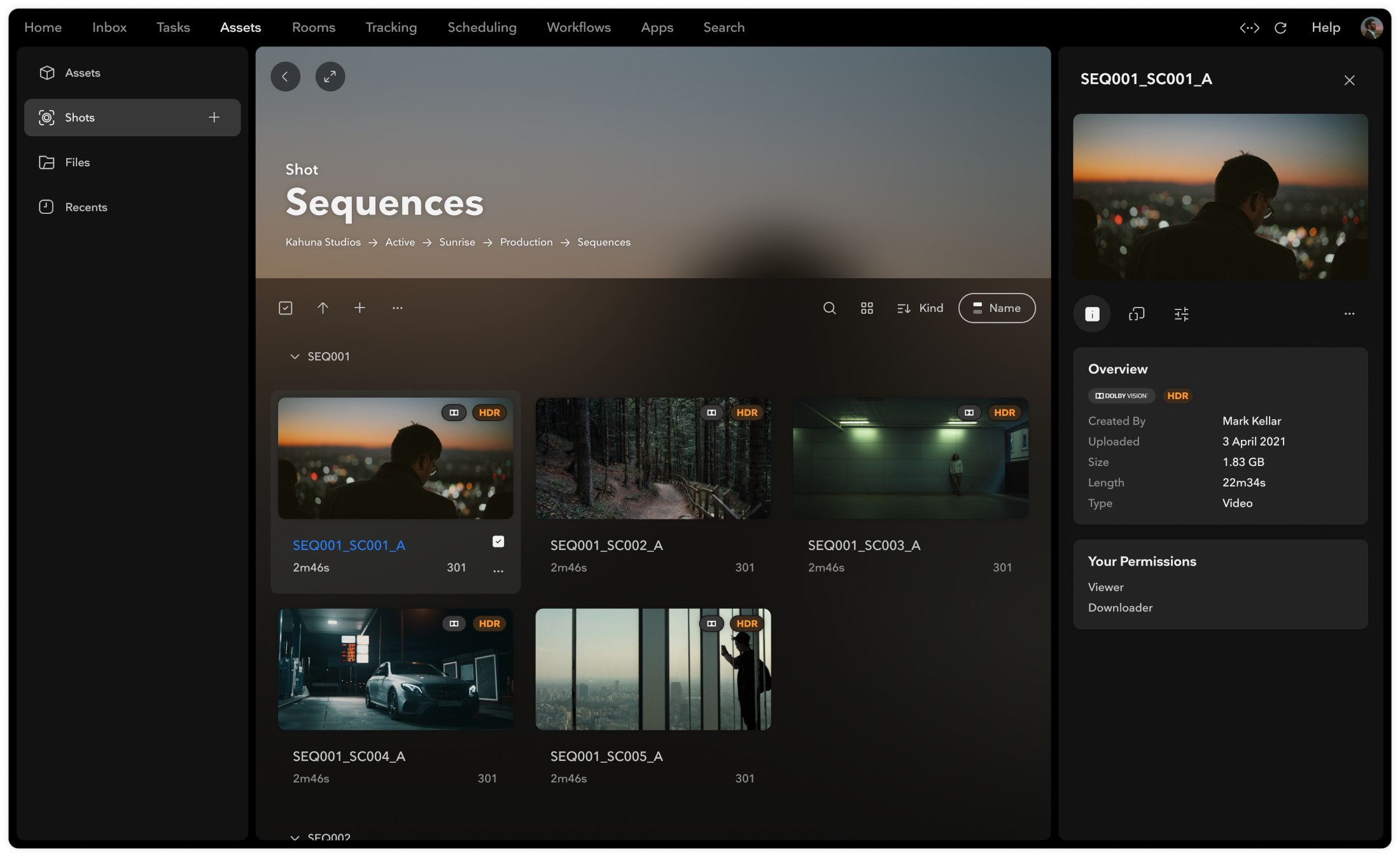
Autodesk’s press release emphasizes that Flow is sharing metadata, not files. Is what you just described an example of that process?
Yes. It’s a combination of the metadata that describes an asset. Flow manages those assets via their metadata and the associated BLOBs [Binary Large Objects], and the binary data can live in any of the storage systems supported by Flow.
Does sharing metadata help ensure security in the cloud?
Yes, but it’s not directly related to security. It’s more along the lines of if I have a character asset – for instance, the character ‘Joe’ – that Joe asset will have a series of metadata that describes that asset and where that asset lives in terms of its associated binary data. Every time we ‘version’ Joe, we’ll take a snapshot of the asset, including all the metadata, so that we have all the versions of both the binary data and the versioned metadata. So, if there were 100 versions of Joe, there would be 100 snapshots and pointers to 100 different pieces of metadata. And all of this is associated with the asset known as ‘Joe.’
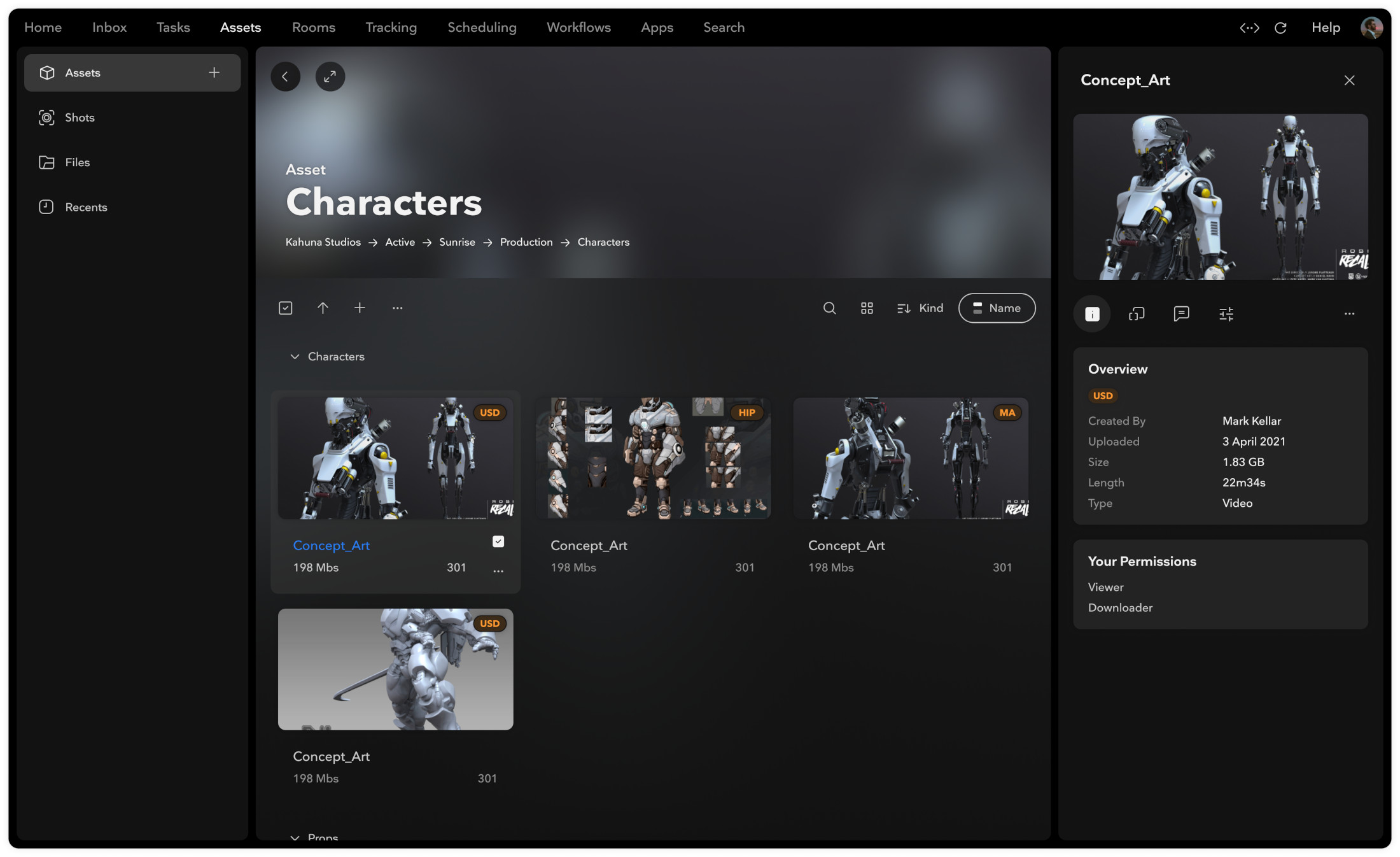
It sounds like Flow is whispering over animators’ shoulders, keeping tabs on all their versions. Is that correct?
Yeah, and Flow does that in such a way that the animator needn’t know the vagaries of how it’s being done. That’s the whole point. We are trying to minimize the technical aspects so that artists can concentrate on making art. We are transitioning away from a file-based mechanism, where people might be versioning files through Python scripts. A lot of those systems require ‘tribal’ knowledge. They tend to be fragile because they’re based on naming conventions, so if somebody moves or changes things, things break. We’re trying to alleviate those problems by moving to an intelligent and managed asset-based system.
How are Autodesk’s Moxion Flow Capture and Shotgrid production tracking software being absorbed into Flow?
They will be capabilities that plug into the Flow platform to extend the functionality of Flow. The Flow platform, at its core, consists of a media and entertainment data model that stores metadata to manage assets and their versions. We’re bringing on-set data capture, management, and production tracking together.
How will Flow work with other animation and visual effects tools?
We will create some of the connectors from applications to the Flow asset management system. Others will be connected via partnerships with these companies that produce the software tools. Right now, the Moxion crew and Avid are working together to do ingests of Avid editorial information via Moxion. We’ll be looking to connect with other partners this year. For people to adopt Flow, we have to support the applications that visual effects and animation companies use. That’s not just Maya or [3ds] Max – it’s going to be Houdini, Blender, Nuke, etc.
Will open-source systems be part of the Flow infrastructure?
Our goal is not to replace any of the open standards that are out there; it’s to embrace them. If you look at what we’re doing with OpenUSD in conjunction with Pixar, NVIDIA, Apple, and Adobe. We want to help extend those open standards and embrace them on the platform side.
The Flow press release describes AI Generative Scheduling as another way to speed production planning. How will that work in layman’s terms?
We’re using AI mechanisms to generate scenarios for schedules. We’re not talking about a few tasks or a few hundred tasks. We’ve run tests on hundreds of thousands of tasks and been able to get multiple scenario results back in minutes. And that system will allow people to add constraints. For instance, you can’t ramp up a department from zero to 100 artists overnight; you have a ramp-up time and then a ramp-down time, so you add those constraints, and it will generate new scenarios. When I was a producer on Next Gen for Netflix, we had 86,000 tasks by the end of production. It is quite a feat to manage those kinds of changes – which [until now] could often take days to change.
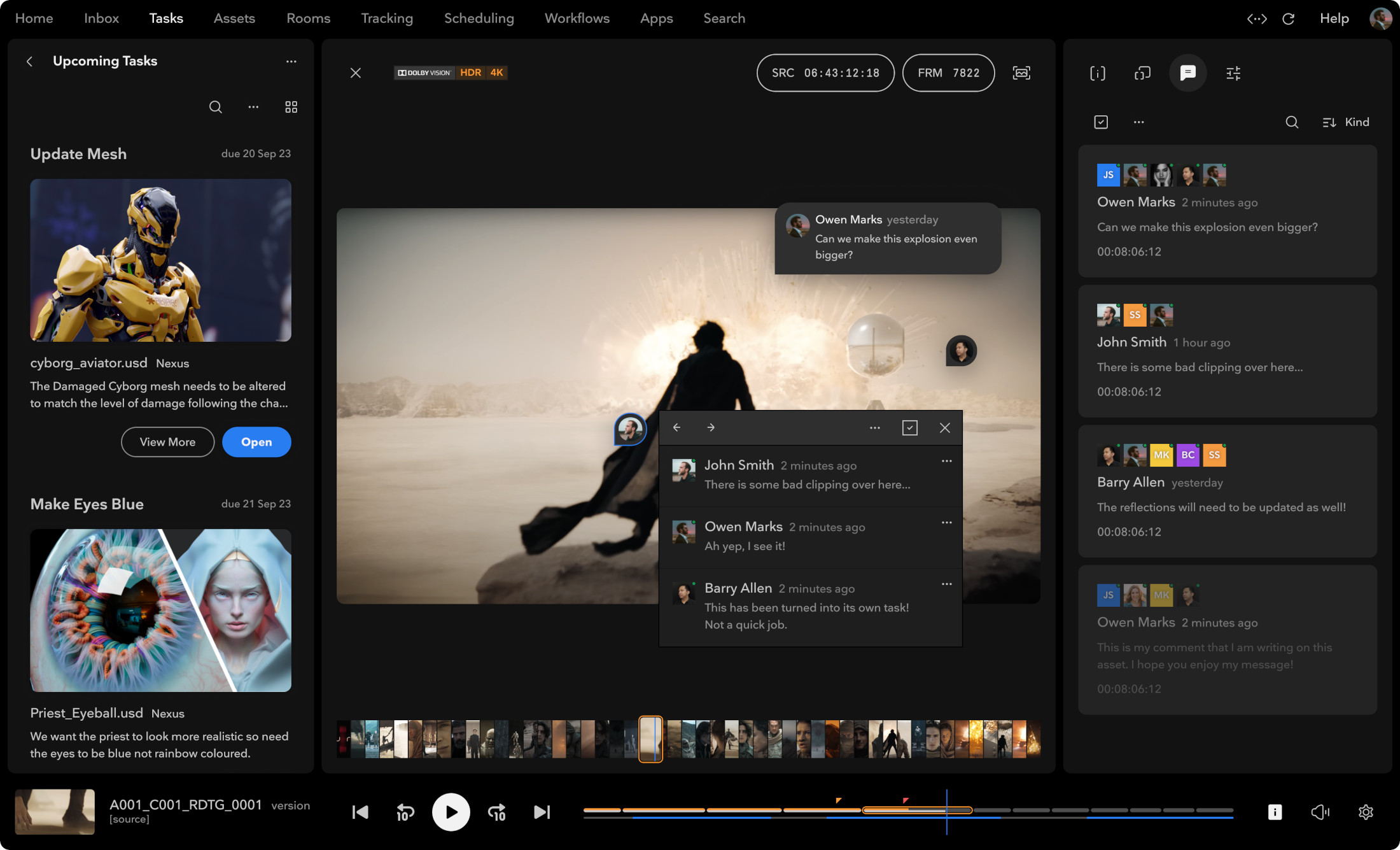
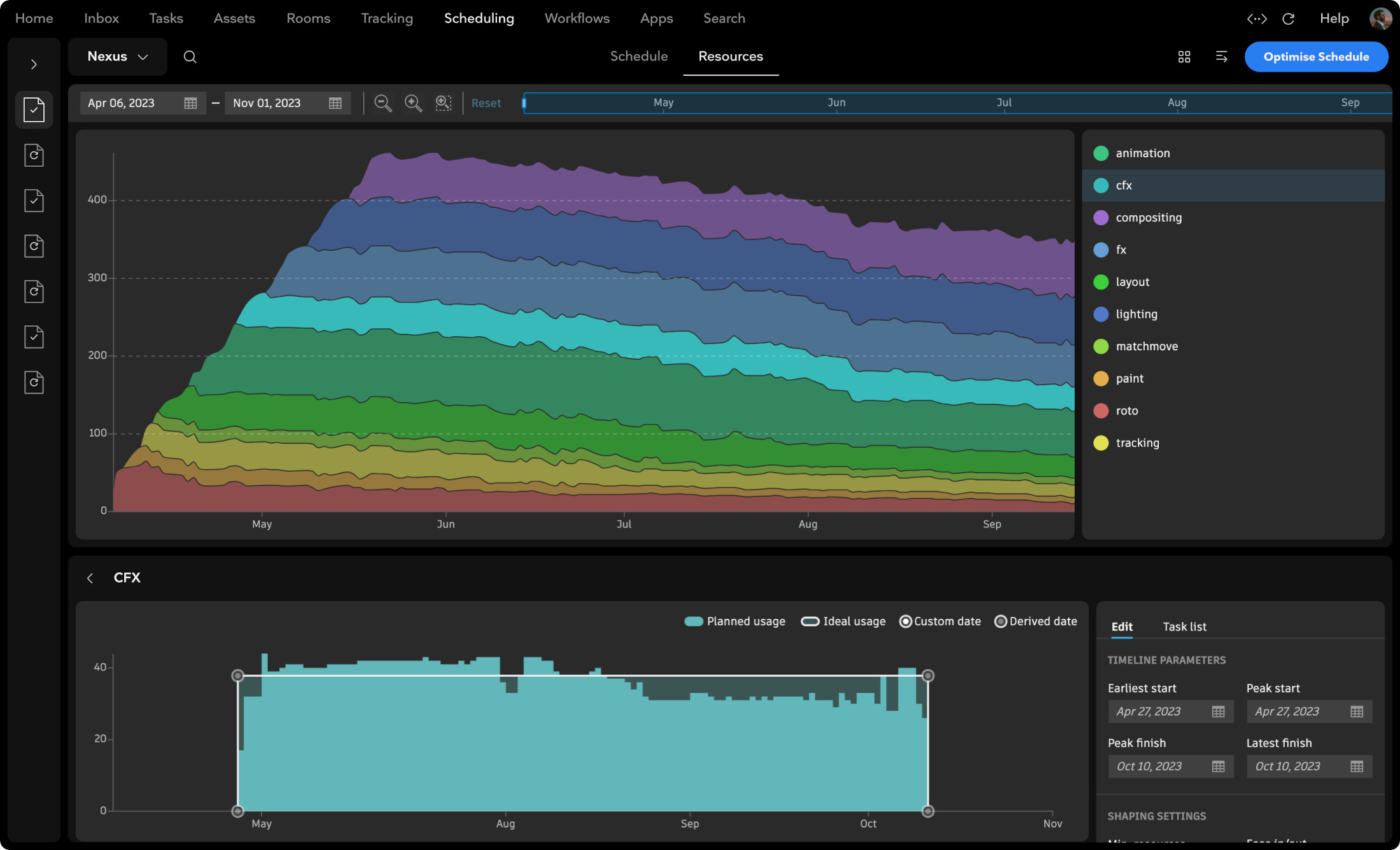
Will you be making Flow available to independents and students?
One hundred percent. We do want to be flexible in the way we price Flow for the market. There will be several tiered pricing levels. That’s being decided now. But with the integration of Shotgrid and asset management, we want students to be able to learn about production management, but they’ll also be able to use our system to manage their assets. That has been an area that’s worked extremely well for Autodesk, and before that, when I was at Alias Research, we did that with Maya. It’s a great way to build the market. It’s a great way to get students up and running on the latest technology and get them knowledgeable about what’s out there.
Customers will be able to request early access to Flow starting January 2024. Wider availability is anticipated later in the year, although timing is subject to change. More details can be found here.
Pictured at top: Still image from a short film created and produced entirely in Autodesk Flow tells the heartwarming story of a girl and her robot. The project was produced by Fathom Studios in partnership with Autodesk.

.png)